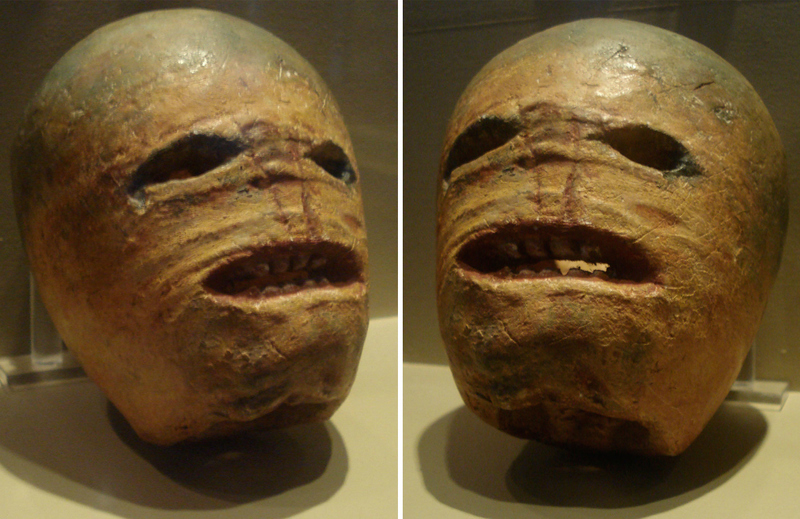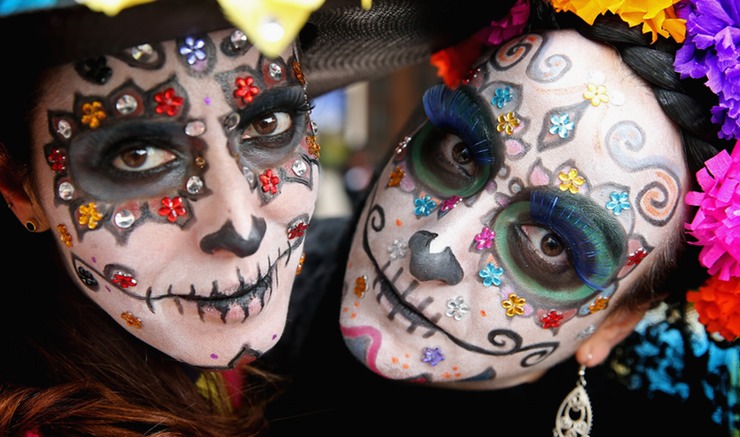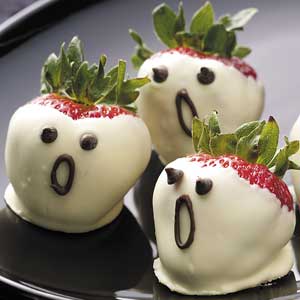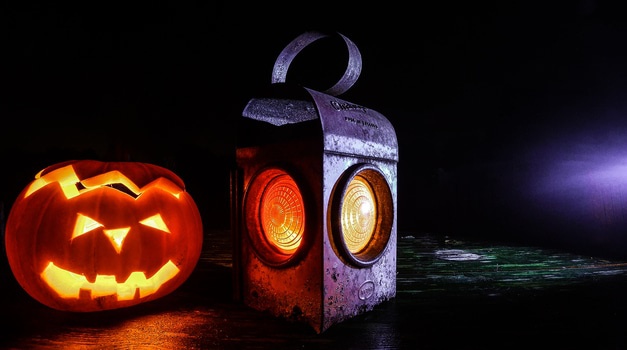It’s that time of year again, when witches and ghouls roam the streets, when front windows are decorated with hideous grinning faces flickering in candlelight and children accumulate huge stashes of confectionery. Halloween has become a big deal – and big business - in the past couple of decades: what was once seen as a niche event is now, according to some business analysts, Britain’s second biggest party night (after New Year). Last year British shoppers were expected to spend around £460 million on Halloween food, fancy dress, and decorations. And it’s not just a children’s event: many grown-ups see it as a chance to dress up and, to paraphrase Monty Python, look on the dark side of life.
For some critics, Halloween is seen as yet another symptom of the Americanisation of British culture. This is true, up to a point, and it has doubtless been helped along by the success of American horror film franchises such as Halloween. And yet this is a festival with thoroughly European origins.
A history of Halloween
Like all of our popular festivals and celebrations, Halloween comes to us from the pagan era by way of Christianity. It almost certainly has its origins in the Celtic festival of Samhain (“summer’s end”), which marked the beginning of the darker months, a time when spirits and fairies became more active. In the Christian era, it became conflated with All Hallows’ Eve (now shortened to Halloween), a time when tribute was paid to dead saints; also, the following day is All Souls’ Day, when the dead were remembered and given offerings.
The origins of the pumpkin for Halloween
Even the carved pumpkin has its origins in Europe. Centuries ago, in Ireland, turnips were scooped out and carved as “Jack O’Lanterns”, inspired by a character of legend who is denied entry to both heaven and hell and doomed to wander the earth with only a glowing coal to light his way. When the Irish emigrated to the US, they found the pumpkin a bigger (and some would say tastier) alternative to the turnip.

Mumming, souling and guising for Halloween
As centuries went by, British customs and traditions became attached to Halloween, among them mumming, souling and guising – knocking on people’s doors to perform little plays, or dressed in the guise of the dead or in fancy dress, and asking for food or rewards. Herein lie the origins of trick or treat. In some parts of the country, Halloween now overlaps with the Hindu festival of Diwali (the festival of lights: this year on October 30) and Guy Fawkes’ Night to create a week-long festival of fireworks, bonfires, ghouls and sugary treats. And today’s Halloween has become almost a fancy dress party, with children dressed in superhero costumes and suchlike.
Meanwhile Mexico’s Day of the Dead celebration – which goes back to pre-Columbian times, and takes place around the same time as Halloween – has got in the act, inspiring skeleton costumes and skull make-up. With its rising Hispanic population, the Day of the Dead is becoming a widely celebrated festival across the US.

How can restaurant owners make the most out of Halloween?
So, as a restaurant owner, how can you make Halloween a special – and profitable – time of year? Perhaps the first tip would be to spread it out over several days. This year Halloween, October 31, falls on a Monday, so it would be best to designate the whole weekend, beginning on Friday, as “Halloween Weekend”, and theme your restaurant accordingly.
Simple decorations can transform your premises into something sinister. Material such as cheesecloth can be torn and draped from windows, walls and door frames to create a ghoulish effect. Buy tubs of plastic spiders from a joke shop and attach them to the fabric. Black cut-out bats can be scattered across the walls; these are easily made using black card bought from a craft shop such as Hobbycraft, cut out using this template and attached to the walls using double-sided tape.
And when it comes to drinks, you could create spooky “smoking” cocktails using dry ice or a smoking gun (both widely available online). The sight of a tray bearing weirdly coloured creations trailing plumes of smoke will be quite a talking point among your diners.
Ask around among your restaurant staff, and it’s likely that you will find someone with a background in art or craft, and they might appreciate being given responsibility for overseeing and making your Halloween decorations. The website Pinterest is also a goldmine of crafty, creative ideas.
Creating a Halloween atmosphere in a restaurant
Lighting should be dim and atmospheric; candles flickering in jars will add to the effect. Jack O’ Lantern pumpkins make an excellent window display. Where possible, as far as your décor goes, it should be, to quote Henry Ford, “any colour you like, as long as it’s black”. If you can find some black candles online, so much the better. Ask your staff to dress up – they will surely relish the chance to break out of their normal work-wear and go to town on costumes and make-up: Frankenstein, Dracula (complete with fake vampire teeth), zombies, skeletons.

Celebrating Halloween through food
And then there’s the food. The scooped-out contents of your pumpkins will, of course, make an excellent soup. And you could enter fully into the Halloween spirit by offering a menu of ghoulish and ghastly dishes: blood-red sauces and drinks (Bloody Marys), black squid-ink pasta, “eyeballs” made from lychees stuffed with blackberries, and so on. Chicken wings can become “bat wings” by coating them in a mixture of soy sauce, oyster sauce, sugar and black bean sauce and roasting them quickly in a hot oven.

For sweets and desserts, cupcakes can be iced and decorated with spider-web patterns. Stuffed peppers can be carved in a similar style to your pumpkins (a fiddly job, but rewarding for someone with a steady hand). “Ghosts” can be created by dipping strawberries in white icing, or white chocolate, and using dark chocolate droplets as the eyes and mouth. The Day of the Dead can be used as inspiration, too. The skull is the most widely used design, being used to decorate biscuits, cakes and so on; colours are vivid, decorations ornate. Sugar skulls are popular; they can be made using moulds bought online, then decorated as you wish. And of course, toffee apples are a firm favourite, baked with spices and served with ice cream.

Encouraging customers to dress up for Halloween
Encourage your customers to arrive in fancy dress – posters in your windows and a social media campaign will spread the message. Take your customers’ photographs and (with their permission) post the snaps on social media – all good publicity for your restaurant. A ghoulish soundtrack will add fun and atmosphere (“Monster Mash”, “Thriller”, “Ghosbusters”): again, one of your staff could be tasked with compiling this – they will enjoy the challenge and the change from the usual routine.
Your Halloween weekend will, hopefully, attract families to your restaurant, so be prepared to cater for more children than you would otherwise deal with. Youngsters will appreciate food that is fun, playful and colourful. And afterwards, when they are on the way out, offer them “trick or treat” goody bags to add to their stashes of confectionery.
Related business information for restaurants
Here's a sample of our most enjoyed restaurant guides and information.
- The ultimate café furniture buyer’s guide
- Your guide to designing the perfect restaurant
- The ultimate furniture buying guide for restaurants